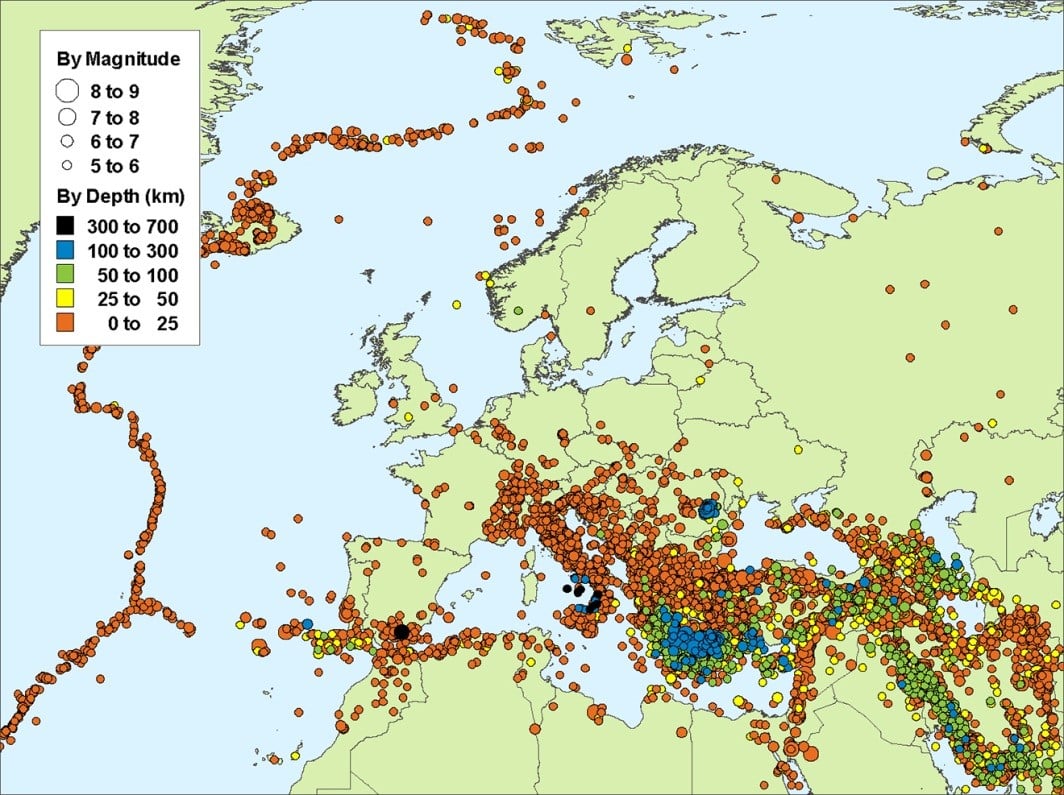February 8, 1750, saw London shaken both by the publication of John Cleland’s notorious novella, The Memoirs of Fanny Hill, and by an earthquake. The temblor struck just after 12.30 p.m. and is estimated by the British Geological Survey to have had a magnitude of about 2.6. It was a shallow quake with its epicenter evidently somewhere beneath London Bridge.
Although only a minor event, it gave quite a jolt to Londoners. Buildings shook violently, furniture moved, doors slammed, and crockery crashed to floors. A slaughterhouse and hayloft in Southwark, on the south bank of the Thames, collapsed and in Leadenhall Street—the location of AIR’s new London office—a chimney toppled.
This wasn’t the first earthquake to have rocked the capital. Back in 1580, for example, a quake beneath the Channel that collapsed part of the White Cliffs of Dover also killed two children in London and was memorable enough to be mentioned in Shakespeare’s Romeo and Juliet when the play was written 11 years later; another earthquake struck in 1692, but this too was eventually forgotten.
The earthquake on February 8, 1750, proved to be only the first of a series that impacted the city that year. A second and stronger quake followed at 5:30 a.m. on March 8 and was felt in the countryside for 40 miles around. Several chimneys and some stones from the newly built towers at Westminster Abbey fell; a couple of houses collapsed; dry solid ground in west London was seen to move like quicksand; and people and animals panicked. In the aftermath religious leaders prophesied the end of the world, and a third and even more powerful earthquake was widely expected to be due in April; in anticipation people fled the city in droves. (The predicted earthquake didn’t happen)
Seeking an Explanation
The cause of the quakes was not at all understood. Cannon fire and exploding gunpowder stores were suggested, as were wind, flames, or water rushing through pockets of air below ground and other wild theories. The Bishop of London, Thomas Sherlock, was convinced that the quakes were divine retribution “against the sinful city of London’’; specifically, he cited the publication of Cleland’s “vile book” as likely provocation.
The curiosity of natural philosophers—scientists—was, however, aroused; a flurry of letters and articles was presented to the Royal Society and published in its Philosophical Transactions. This activity marked the beginning of the scientific investigation of earthquakes. A fellow of the Royal Society, John Mitchell, studied both the London earthquakes of 1750 and the historic Lisbon earthquake of 1755 and published his conclusions in 1760. Although he argued that the root cause was the explosion of steam as groundwater encountered subterranean fires, he was right to blame ground shaking on “waves set up by shifting masses of rock miles below the surface.”
Earthquakes on the UK
Seismic activity in the UK is primarily due to crustal stressors within the Eurasian plate, which is moving to the east. Earthquakes in this country typically occur on the west coast or in offshore regions. On average, approximately 200 earthquakes are detected each year in the UK, of which 30 are noticeable. Most earthquakes that occur in this region are caused by the active fault line Midlands Microcraton, which runs under Central Britain.

Events of magnitude 5.0 and higher occur on average once every eight years in the UK. If you want to monitor activity, the British Geological Survey publishes a useful online list of earthquakes around the British Isles in the last 50 days. Fortunately, the AIR Earthquake Model for the Pan-European Region is a seamless model for the region as a whole that ensures full spatial coverage. What would Bishop Sherlock have made of today’s earthquake science?
Reliably assess and manage seismic risk with AIR earthquake models




